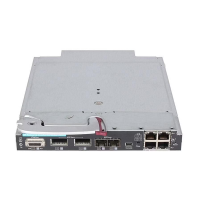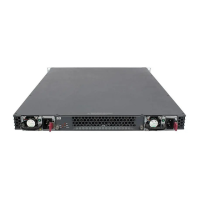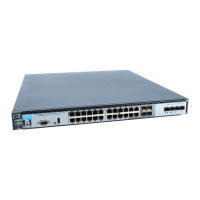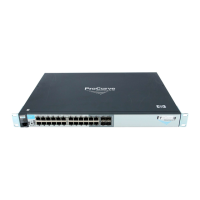5-24
Quality of Service: Managing Bandwidth More Effectively
Globally-Configured QoS
Figure 5-4. Configuring 802.1p Priority Assignments on TCP/UDP Ports
Assigning a DSCP Policy for a Global TCP/UDP Classifier
This global QoS packet-marking option assigns a previously configured or
default DSCP policy (codepoint and 802.1p priority) to TCP or UDP packets
having the specified port number or range of port numbers. When assigning a
DSCP policy, the switch performs the following actions:
1. Selects an incoming IP packet if the TCP or UDP port number it carries
matches the port number specified in the TCP or UDP classifier (as shown
in figure 5-4, above).
2. Overwrites (re-marks) the packet’s DSCP with the new DSCP configured
for matching packets.
3. Assigns the 802.1p priority associated with the new DSCP. (See “Differen-
tiated Services Codepoint (DSCP) Mapping” on page 5-90.)
4. Forwards the packet through the appropriate outbound port queue.
Creating a DSCP Policy Based on TCP/UDP Port Number Classifiers.
The following procedure creates a DSCP policy for IP packets carrying the
selected TCP or UDP port-number classifier.
HP Switch(config)# qos tcp-port 23 priority 7
HP Switch(config)# qos tcp-port 80 priority 2
HP Switch(config)# qos udp-port 23 priority 7
HP Switch(config)# qos udp-port 80 priority 1
HP Switch(config)# qos udp-port range 100 199 priority 3
HP Switch(config)# show qos tcp-udp-port-priority
TCP/UDP port based priorities
| IP Packet Application |
Protocol | Type Port Apply rule | DSCP Priority
-------- + --------- ----------- ---------- + ------ -----------
TCP | IPV4 23 Priority | 7
TCP | IPV4 80 Priority | 2
UDP | IPV4 23 Priority | 7
UDP | IPV4 80 Priority | 1
UDP | IPV4 100-199 Priority | 3
Values in these two
columns define the QoS
classifiers used to select
the packets to prioritize.
Indicates that 802.1p priority
assignments are in use for
packets with 23, 80 or 100-199
as a TCP or UDP port number.
Displays the 802.1p priority
assignment for packets
with the indicated QoS
classifiers.
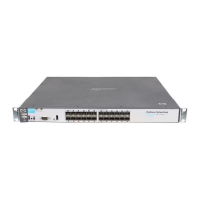
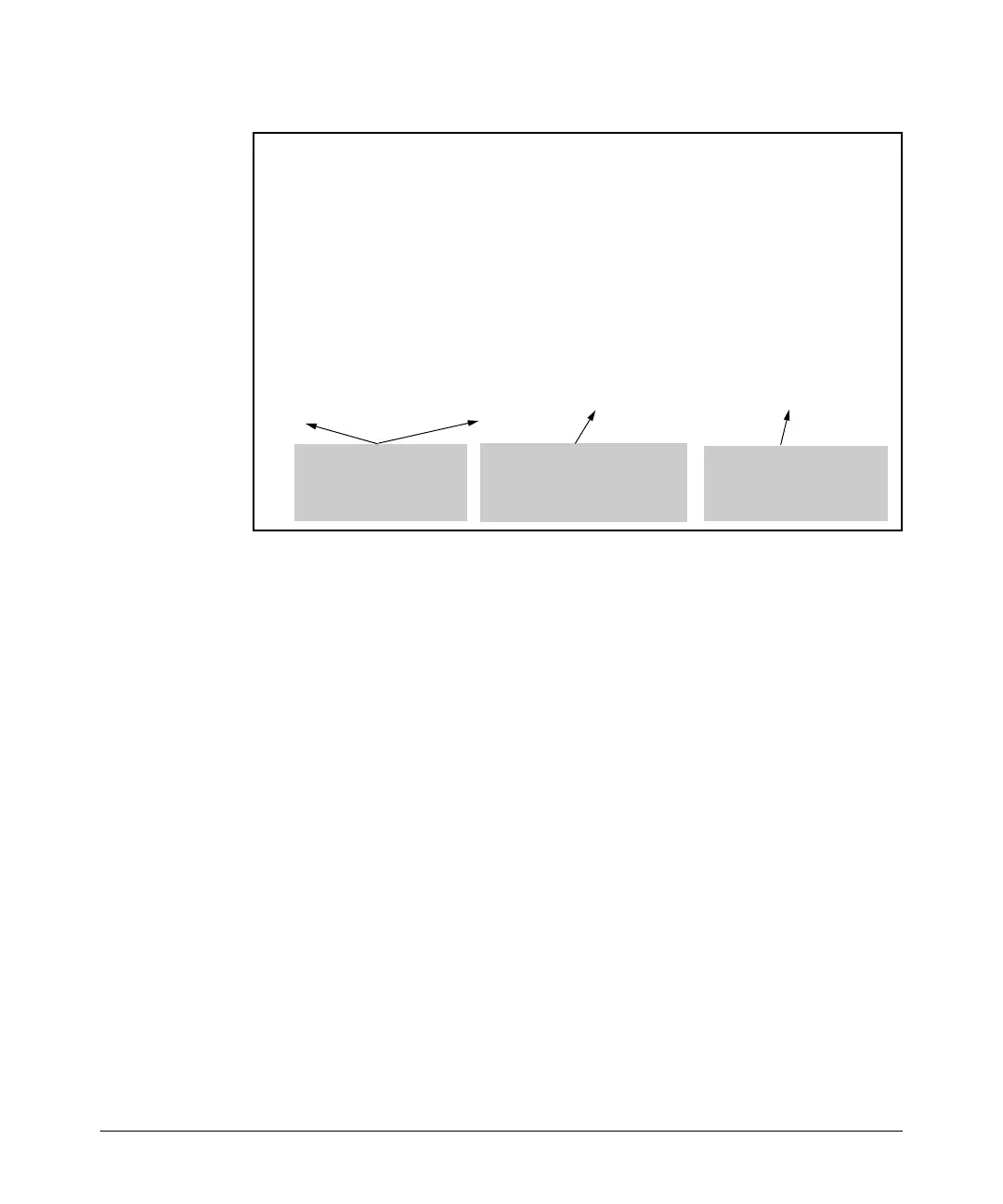